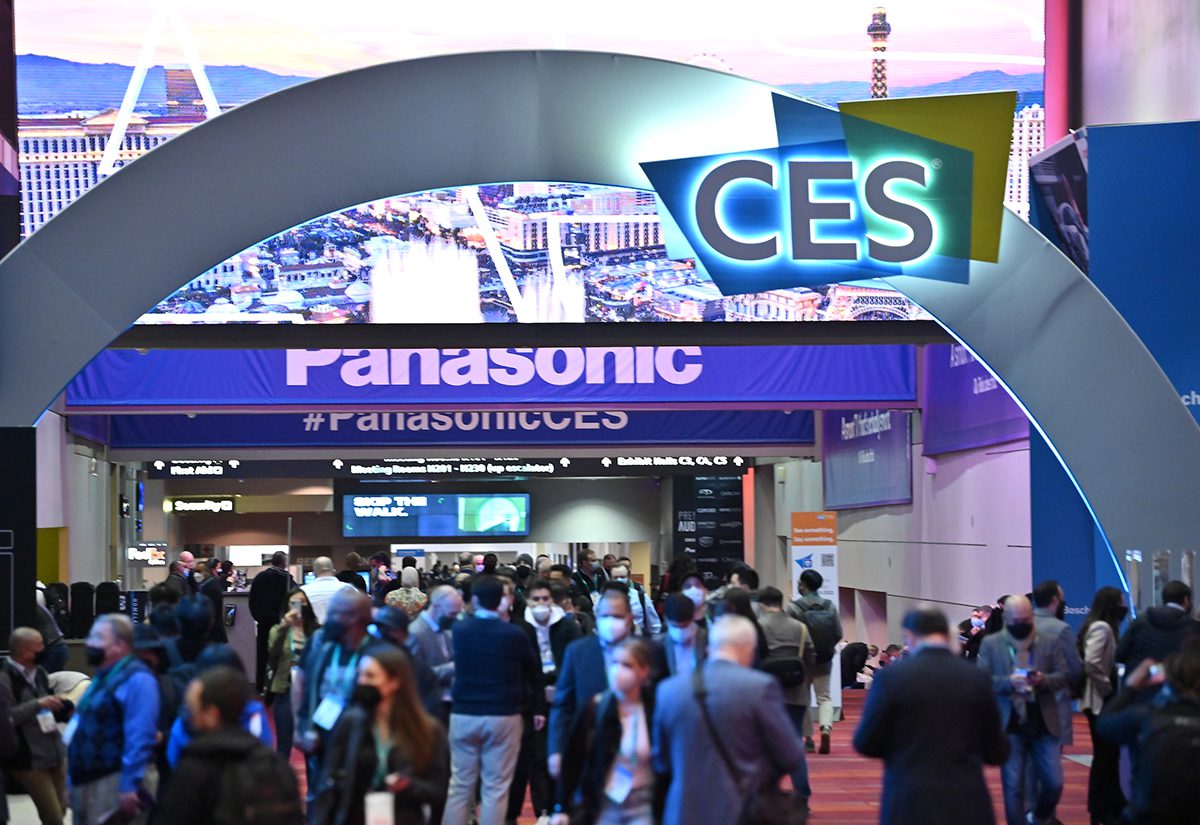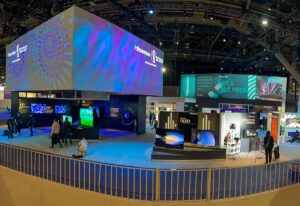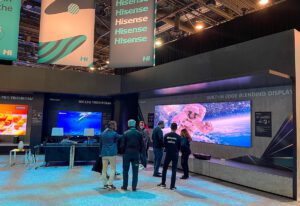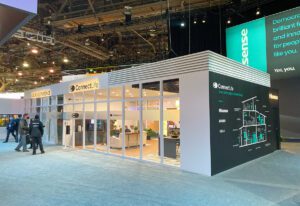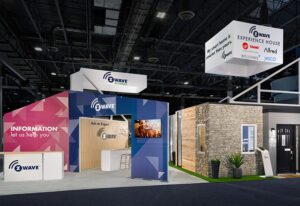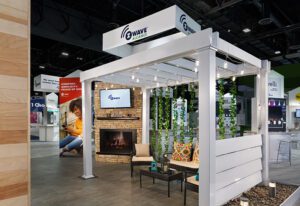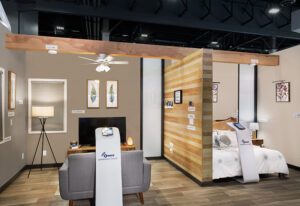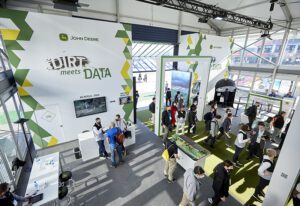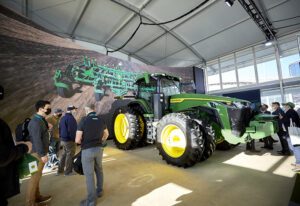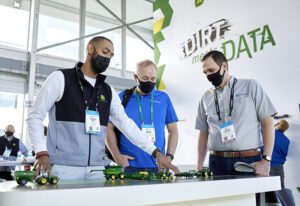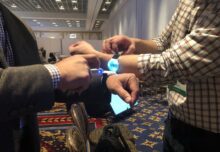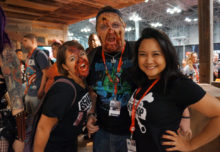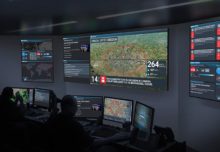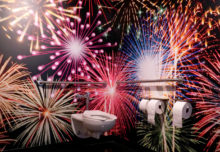Two weeks before the highly-anticipated in-person return of CES. Jan. 5-7, a wave of major players began backing out of their in-person presence at the show, citing concerns around the Omicron variant. Amazon, Meta, T-Mobile, Twitter and Google were some of the first to pull out, with T-Mobile stating that, “While we are confident that CES organizers are taking exhaustive measures to protect in-person attendees, we are prioritizing the safety of our team and other attendees with this decision.”
The withdrawal of top exhibitors ultimately created a domino effect that saw a broad array of companies skip the trip to Las Vegas. In the end, the global trade show, which according to organizers was cut a day short as “an additional safety measure,” drew 40,000 attendees. It was a far cry from the 171,000 who showed up in 2020, making it a disappointing turn of events for a show that tends to serve as an industry health-check.
But it wasn’t all doom and gloom. Some 2,300 companies arrived at CES 2022 in person to showcase the latest in digital health, food tech, automotive, NFTs, gaming, smart homes and more. (All attendees were required to be fully vaccinated and a complimentary COVID-19 self-test kit was distributed to each attendee upon retrieving their badge.) Check out the brand experiences below and be sure to circle back as we add to our rolling coverage.
 From the CES Archives:
From the CES Archives:
- Roundup from CES 2020: Magicians, Potty Prototypes, Booth Builds and VR
- CES 2019: How Google Took Attendees for a Ride
HISENSE
Always a staple at CES, Hisense drew attendees and media to its sleek, home-like booth through three major touchpoints: the “cube,” the Laser TV zone and the Connected Life zone. The cube was a massive structure that served as the most prominent design element within the space, with its interior screens synchronized to showcase the brand’s latest and greatest in ULED TVs and the technology that powers them. Two of the cube’s overhead exterior facets were 14-feet-tall projection screens illuminated with color, motion and gobo lights (small, circular discs used in lighting fixtures to create a projected image or pattern). There was also a smaller interior cube illuminated with bursts of color.
In the Laser TV area, several of the Hisense units and their 4K short-throw projection technology were on display. A main attraction was the seamless blending of two 120-inch Laser TVs, which projected a visual display that stretched more than 200 inches long. Swarms of attendees were attracted to the showcase, some even waving their hands over the TVs, finding it hard to believe that projection was the technology being employed.
And in the Connected Living zone, Hisense built a functional living space that integrated all of its smart home products, from lights to plugs to a washer and dryer, that could be explored through a guided demo tour—the brand’s most successful Connected Life demos to date. And get this: the entire space was controlled with an app. (Agency: Impact XM)
SK TELECOM
Wireless telecom company SK’s 2030 SK Net-Zero booth was one of the most talked-about spaces at the show thanks to exceptional experience design. The brand leaned into its sustainability goals to power its on-site presence, introducing next-gen technologies that significantly reduce power consumption, like AI semiconductors and single LAN, and information and communications technology (ICT) services that can reduce carbon emissions in daily life.
Attendees first entered a forest-themed pavilion lined with trees and other greenery where they picked up headsets and listening devices that guided them through SK’s products and sustainability initiatives. They could check out the brand’s electric vehicle battery, eco-driving platform and battery analysis solution displays, among an array of offerings, and learn more on adjacent screens. Attendees could also interact with a Happy Habit machine showcasing a collaborative environmental conservation effort centered on the usage of reusable cups.
Next, attendees stepped into a massive space where they were immersed in mesmerizing wall-to-wall and floor-to-ceiling projections of natural landscapes, illustrating the steps the brand is taking to become more eco-friendly, and further brought to life with audio of water, wind and rustling leaves. Upon exiting, attendees returned their headsets and listening devices and had an opportunity to interact with vending machines dispensing small takeaways. (Agency: MC2)
View this post on Instagram
SLEEP NUMBER
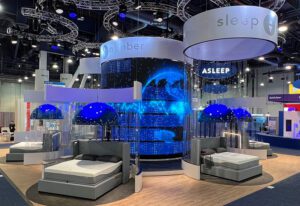 Attendees told us they couldn’t have missed Sleep Number’s booth, and the 22-foot-tall cylindrical LED screen anchoring it, if they tried. The brand’s sizeable footprint included several of its all-new 360 smart beds featuring advanced sensing capabilities, each located within a semi-enclosed space. To show off the products’ key tech features, Sleep Number relied on Microsoft’s HoloLens mixed reality headsets to help attendees envision a future where the brand’s advanced monitoring, personalized insights and health evaluations are possible from home, and preventative health care is available at any life stage.
Attendees told us they couldn’t have missed Sleep Number’s booth, and the 22-foot-tall cylindrical LED screen anchoring it, if they tried. The brand’s sizeable footprint included several of its all-new 360 smart beds featuring advanced sensing capabilities, each located within a semi-enclosed space. To show off the products’ key tech features, Sleep Number relied on Microsoft’s HoloLens mixed reality headsets to help attendees envision a future where the brand’s advanced monitoring, personalized insights and health evaluations are possible from home, and preventative health care is available at any life stage.
The sensory experience allowed attendees to participate in moments where they saw a 3D visual of a person sleeping, for instance, learned about how the bed could warm that person’s feet at night, and then physically felt heat coming from the edge of the mattress. Attendees also got a chance to lay in the beds, where the HoloLens taught them more about the products’ smart features, including sensing when a person is snoring and elevating their side of the bed to adjust their breathing. Sleep Number also unveiled smart bedroom furniture to complement and enhance the health and wellness features of the 360 smart bed. Stay tuned for a full case study on the experience. (Agency: CenterPoint Marketing)
Z-WAVE
Z-Wave, the wireless technology behind many smart home devices, was on-site at the Venetian with a 5,000-square-foot pavilion. The space featured more than 15 Alliance members, a global consortium of 300-plus companies creating products and services powered by Z-Wave, demonstrating their capabilities. Attendees could stop by the Ask an Expert Bar to get all of their Z-Wave questions answered, and tour the Z-Wave Smart House (sponsored by Ring, Jasco, DEN Smart Home, Aeotec and Alfred International) to see an ecosystem of interoperable products blended together for a real-world home automation experience. The home featured four room vignettes and an outdoor area showcasing an assortment of connected products. (Agency: NParallel)
JOHN DEERE
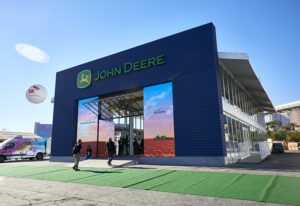 John Deere returned to CES to showcase its tech savvy with a shiny new product: a fully autonomous tractor that is ready for large-scale production and will be available to farmers later this year. The tractor, which is designed to meet the fast-growing global food demand, was revealed at the brand’s official CES press conference, where attendees received a QR code that could be scanned to view the vehicle in augmented reality (the QR code was also available in the brand’s booth).
John Deere returned to CES to showcase its tech savvy with a shiny new product: a fully autonomous tractor that is ready for large-scale production and will be available to farmers later this year. The tractor, which is designed to meet the fast-growing global food demand, was revealed at the brand’s official CES press conference, where attendees received a QR code that could be scanned to view the vehicle in augmented reality (the QR code was also available in the brand’s booth).
In addition to the press conference and participation in three CES panels, John Deere offered experiences at its booth located just outside of the Las Vegas Convention Center. There, attendees could see, and even step inside, the new autonomous tractor, which featured a massive screen behind it showing farming landscapes. There were also plenty of interactive educational demos showcasing the brand’s work across data, autonomy, AI, GPS and beyond, as well as a VR dome where attendees could learn in a way that was more COVID-friendly than sharing VR headsets. “Tireside Chats” featuring John Deere experts discussing key technologies and how they impact the agriculture industry were also part of the booth experience. Rounding out the brand’s offerings were branded hat giveaways and a larger-than-life tractor tire that served as the perfect Instagram backdrop. (Agency: MC2)
INTEL
Intel planned a hybrid program at CES this year and though it closed its footprints to in-person audiences as part of its health and safety plan in response to Omicron, the spaces served as rich backdrops for pre-recorded and live-streamed content in the lead up to, and over the course of, the show. Read on for the full case study.
Featured photo credit: Consumer Technology Association


